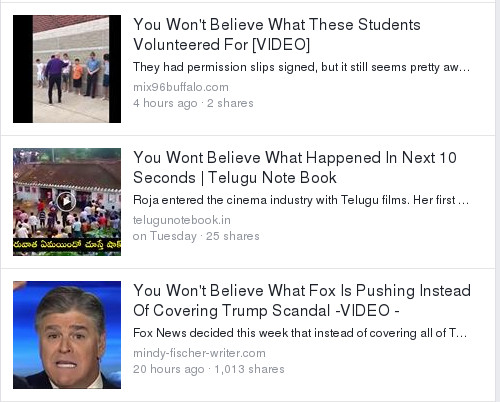Facebook on Tuesday rolled out new changes to its algorithms that determine what posts users of the social network see in their feeds. The new changes increase the scrutiny of posts linking outside Facebook and reduce the visibility of posts with "clickbait" headlines by pushing them further down users' news feed page.
Last August, Facebook cracked down on specific news sources that consistently posted clickbait headlines, or "headlines that intentionally leave out crucial information, or mislead people," Facebook's Alex Peysakhovich and Kristin Hendrix explained at the time. This approach looked broadly at a publisher's posts to Facebook and lowered their relevance ranking if the publisher consistently used headlines with phrases like "You won't believe what happened next" and "Her reaction was priceless!"
The latest change increases the scrutiny given to news posts by altering the way they're assessed for "authenticity." This doesn't mean that people won't still find and click on the bait or see fake news; they'll just have to scroll a little further down the page to find it first.
In an announcement posted yesterday, Facebook engineers Arun Babu, Annie Liu, and Jordan Zhang explained:


 Loading comments...
Loading comments...
